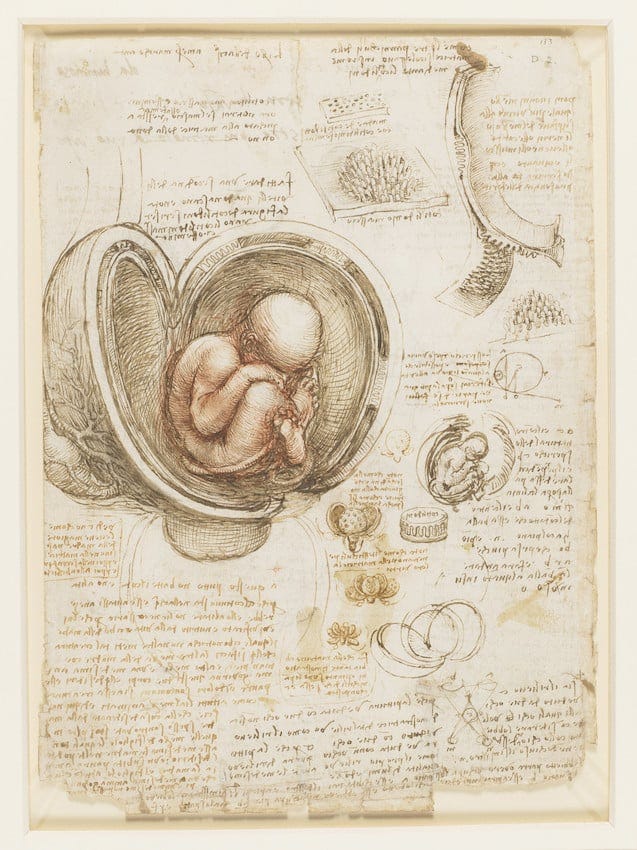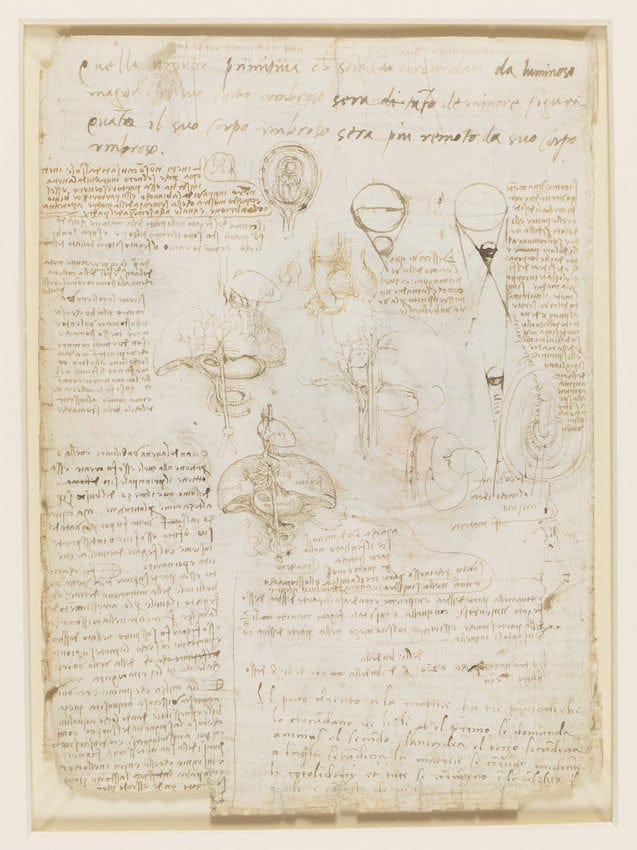My husband and I recently switched offices in our house. He sits upstairs in the room next to our bedroom, filled with light and warmth. I now sit in our basement where the only light streams from the door leading to the backyard. I surprisingly work better down there. I think there are fewer distractions. No laundry to fold, no snacks to eat, no bed to make, no couch to sit on. I use a space heater next to my feet because our central heating does not reach down there. I feel like I’m in my own little cave, separate from my hectic life above. All that exists in the room are five-gallon water bottle jugs, an X-Files poster, a barely half full mini wine fridge, my desk, a dog bed, and a fridge/freezer combo (my loving father insisted we needed a second fridge/freezer for my breast milk and extra food since we now have a child – he was right). The internet works better down there, and the space feels clean.
For weeks I’ve been wondering whether there was more that drew me to our sterile basement given that I typically need to work with tons of light, a spacious table, and art warming the walls. Something had changed about this space since I returned to work from parental leave. Perhaps I had changed. Maybe my preferences for a sunlight filled room shifted like a pregnant women’s food preferences, allergies, foot size, or eyeglasses prescription. I underwent a transformation over the past year. My former independent self transformed into a host for an alien-like creature, and then transformed again into slightly less of a host, with my body still not entirely my own. I then realized—my body not only became full and then vacant of another being, but also an entire organ that I built from scratch.
My placenta. Now sitting frozen in the basement freezer, eyeing me when I head down those stairs, whispering to me, “remember the days we were together?” I do. I remember those days extremely well. I continue to seek connection with this part of myself. This part that grew from nothing, just a single cell dividing into many to form the dinner plate sized purpleish beauty that kept C alive and growing for 40 whole weeks. This is why I settle in the basement.
The placenta is the body’s only temporary organ. She is magical. Acting as baby’s lungs, kidneys, and liver, she filters toxins, disposes of waste, maintains the careful uterine environment to grow a baby, and manages resource sharing between mother and fetus. She acts as a transporter of oxygen and nutrients, somehow a medium of exchange between mom and baby’s bloodstreams without mixing them. So much has to happen for a baby to be born healthy, and a well-functioning placenta is key to this process. A pregnant woman’s body grows not only a baby, but a large organ, and somehow her body knows exactly how to do this. And then, once the baby is born, the placenta detaches herself from the uterus and is birthed in the third stage of labor. This process takes place beyond consciousness, on a molecular level. Yet another transport. From the womb’s safety to the world’s chaos, suddenly disconnected from her purpose with a couple of contractions and a uterine massage.
It likely comes as no surprise that the placenta is rich with nutrients (and potentially other magical powers). In some cultures, the mother consumes the placenta (the practice is called placentophagy), believing in her health benefits and her power to increase energy. This practice has more recently become popular among celebrities, wealthy individuals, and social media influencers. Drying and encapsulating the placenta is the most popular form of placentophagy. But others freeze her to use in smoothies and soups.
Most placental mammals[1] regularly engage in placentophagy, theoretically an instinctual response to protect their young from predators. Humans, seals, whales, dolphins, and camels, however, do not typically engage in placentophagy. Despite the post-1970s semi-boom of placentophagy among those practicing alternative or “natural” medicine – and celebrities – historically, humans have not regularly consumed their own placentas. The placenta has been used in traditional Chinese medicine, but the mother would not necessarily be the recipient of the treatments. And, there are other instances of cultures historically consuming placentas, but not by the mother. Jamaican history records bits of placental membranes put into an infant’s tea to prevent convulsions caused by ghosts. The Chaga of Tanganyika dry and grind the placenta into a flour, and feed her to the elderly to preserve the child’s life.
Many other cultures celebrate and honor the placenta with a number of burial traditions. Several cultures believe the placenta is the child’s living relative—a guardian angel—and honor her as such with full burial rights. How beautiful.
But what is the default in the U.S.? Disposing of her as medical waste unless the hospital receives some other instruction from the family.
While pregnant, I considered placentophagy in the form of encapsulation. Anecdotally, it can help a birthing woman lessen the intensity of postpartum hormonal swings and provide energy. Given my history of anxiety, this intrigued me. But the corroborating scientific evidence is thin. I researched, listened to podcasts, and talked to my doula about the process. Ultimately, I decided that the potential benefits did not outweigh my desire to not have yet another supplement to take, albeit one that tastes like iron (when I am sensitive to vitamins with a weird taste). I trusted my gut feeling that the taste of the supplement would end up nauseating me and my dried encapsulated placenta would sit for months unconsumed in my cupboard.
But it still felt wrong to me to throw away my placenta as medical waste. I visualized her sad and droopy at the bottom of a garbage along with other medical waste thrown on top. Once connected to me, and to C, now alone, her purpose served. Jonathan and I talked – he felt strange about throwing her away too (one of the many reasons why I love him) so we decided to keep her and design a burial ritual, to eventually plant a fruit tree with her nourishing the soil underneath. It felt right for my placenta to return to her origin: the earth. Where all beings come from; and where they return. It will be her last stop.
This is how it worked: after I birthed my placenta and my midwife gave us a “tour” of her majesty, my doula placed her in a gallon Ziploc inside of a cooler with ice. She took my placenta home and she lived in my doula’s freezer for a couple weeks until my postpartum home visit. At that point, my placenta was mine again and I carefully placed her inside her new frozen home. She has already been on quite the journey. From no existence to my womb to my hospital bed to a cooler to my doula’s freezer to my basement freezer. And, finally, soon enough, to the earth where she can rest peacefully.
Transportation is her mission. She transports nutrients and oxygen, and is then transported herself. She originated in DC, moved to Virginia, and will soon cross the nation to Southern California, my birthplace and where Jonathan and I plan to settle for this phase of our lives.
We can ask my placenta for her wisdom in transport—how can we move her from Virginia to California to eventually bury her? Can we bring her on the plane in a cooler? Ship her with dry ice? Are there regulations preventing the shipping of human organs? What about placing her in our Yeti in dry ice in the trunk of one of our cars to be shipped across the country? Will she spoil? Will a bear break into the car and eat her?
In the meantime, she rests nestled against frozen breastmilk and a giant bag of frozen berries from Costco. Cozy inside the icebox. Available for me to say hello at any time.
[1] Of course I had to look up which mammals are not placental – marsupials like the kangaroo and monotremes like the platypus (which lays eggs).







I love this! You must name her! Queenie? I learned so much about other cultures and how they treat this miraculous part of the body. I never thought about it as an organ that is essentially created from nothing. What a miracle. Beautifully written. 🥰🥰👏
Yes! I guess it is a miracle! I learnt something even before getting out of bed today; I had never thought about it as an organ, either! Lovely piece (the writing…!! Well, the placenta, too🙏) xx